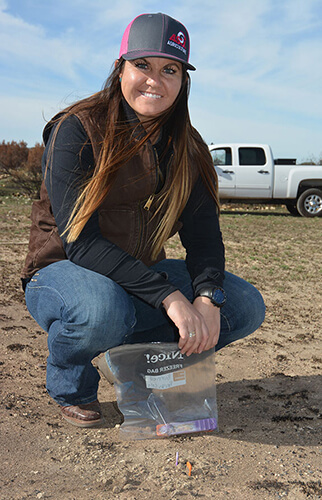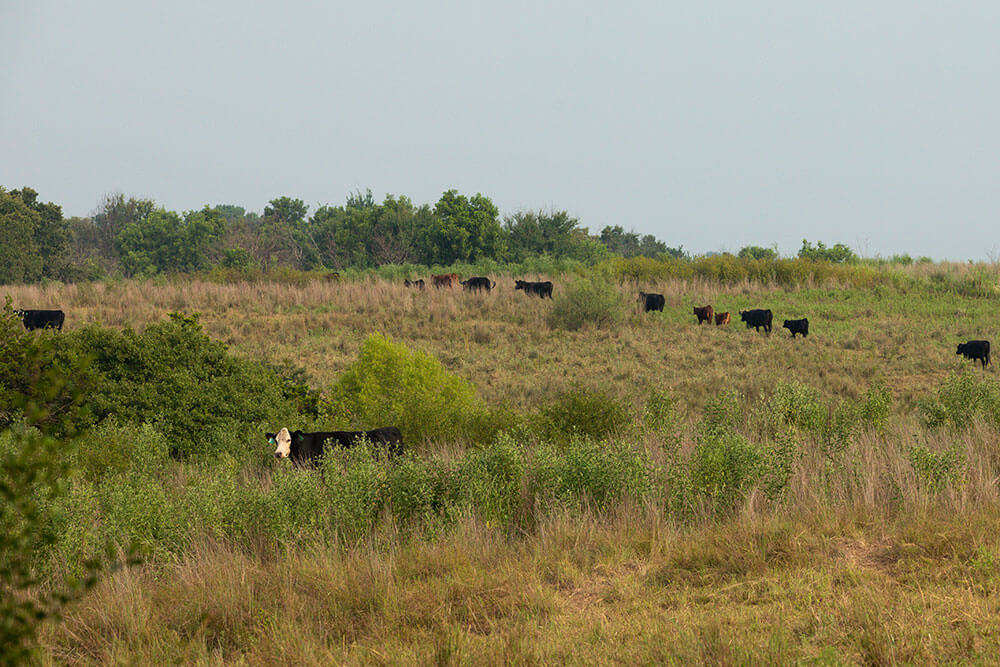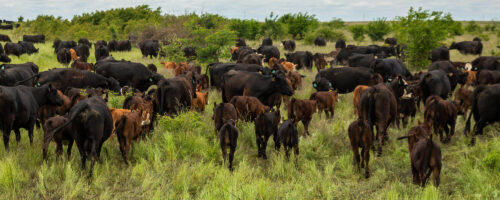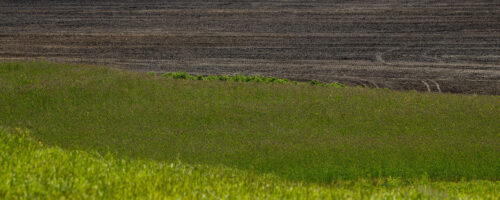Playing With Fire: When Manageable Risk Delivers Great Reward
Prescribed burns play a critical role in producing a robust, resilient grass resource.
Putting fire to prairie is a little like, well, pouring gas on a fire. It results in explosive native grass production but also can be a bit risky. Liability concerns and sacrificing current forage to the flame — especially during severe drought — keep many land managers from using this powerful regenerative management tool.
Those willing to wield fire, though, can rekindle range and pasture performance, fanning sputtering embers into an inferno of grass growth.
Fire and grass go together. Fire gives perennial, native (desirable) grasses the competitive advantage over invasive annual grasses, woody species and some forbs. Grasslands that see fire at regular intervals will continue to be dominated by a vigorous, grass-based plant community that is resilient in the face of challenges such as drought, flooding and wildfires.
Brian Treadwell, whose family has raised cattle and sheep near Fort McKavett, Texas, for 100 years, knows all too well what happens when a ranch is “protected” from fire for years.


“We ranch in a savanna grassland. It just doesn’t look like it, because fire has been eliminated from the landscape with great vigor. Now it looks like a scrub oak savanna,” he says. “My grandfather said all the trees grew during his lifetime. It was because they were so diligent about protecting their grass resource from fire. If they hadn’t fought fire so hard, ranching here might be a lot more profitable than it is today.”
Not willing to continue the trend to trees, Brian now runs Conservation Fire Team, a commercial burn company managing prescribed fires on tens of thousands of acres each year.
Morgan Treadwell, associate professor and extension rangeland specialist for Texas A&M University, shares her husband’s passion for the land — and for using fire in a way that mimics nature.
“Taking fire away from grasslands is like taking rain out of the rainforest,” she says. “It’s part of the fabric of what the system needs. It creates a more productive and resilient system. Fire is an aboveground stimulant and a belowground catalyst.”
The Pros and Concerns of Prescribed Burns
Below, the Treadwells list the following positive results from properly managed fire and the concerns shared by many who avoid using fire as a management tool.
Properly managed fire:
- Stimulates dormant grass root buds to create robust growth
- Retards growth of woody plants
- Decreases invasive annual grass seedbanks
- Stimulates root growth and maintains plant diversity for better drought resiliency
- Returns nutrients from less-desirable aboveground biomass to the soil in a usable form for soil life and plants
- Produces more palatable, diverse, nutrient-dense plant species for livestock and wildlife
- Reduces occurrence of hot, uncontrollable fires by clearing woody fuel
- Breaks antagonistic bonds to release tied-up nutrients such as magnesium, phosphorus and potassium.
Concerns voiced by those avoiding fire:
- Fires need fuel, which means sacrificing current forage for future forage.
- A fire could potentially burn more forage/acres than intended or could escape and burn structures, hay or neighboring property.
- A rotational grazing system usually needs to be in place to successfully implement fire.
- Burning at the wrong time of day or year could result in varying fire effects to both desirable and undesirable plants.
- How soon it rains after a burn determines how soon acres will recover and when they can be grazed again.
Addressing Concerns To Reap The Benefits
Most concerns can be addressed to help clear a path for use of fire in a grassland system, the Treadwells say. First off is the concern about immediate loss of forage.
“It’s an opportunity cost,” Brian says. “Fire costs way less than using other methods to control brush.”

He says the costs of alternative brush control methods and reduced forage production without fire far exceed the forage lost when burned in a regular, controlled fire. Plus, while edible forage is lost in the short term, the nutrient value isn’t gone. When old growth, woody plants and other less-desirable species are burned, much of their nutrient content returns to the soil, promoting a new surge of forage growth.
Dormant axillary root buds are stimulated by fire, Morgan says. A grass with a couple dozen active buds prior to fire can jump to hundreds of active buds after fire. According to a 2006 study, native grassland species have been shown to produce 99% of new growth from axillary root buds instead of seed.
Fire also breaks antagonistic bonds between micro and macro nutrients that can inhibit their availability to plants.
“Nutrients are mineralized by fire and put in forms plants can easily use,” Morgan says. “Within 14 days following fire, 18 different nutrients have been shown to increase two to three times in the soil profile. Those nutrients are then used by soil life and new growth to create a nutrient-rich environment, sprouting high quality forage.
“The nutrient and growth surge after fire will eventually plateau and taper off. We aren’t sure exactly when that happens, but it does. That’s what makes frequency of fire so important. We need to regularly return nutrients to the soil with fire.”
Being uncomfortable with fire is natural, but producers shouldn’t let that stop them from using the tool, Brian says. Many states have “Right-to-Burn” acts protecting producers from liability, and landowner cooperatives called prescribed burning associations have formed to share equipment, training and liability insurance.
Still, hiring a professional prescribed burn company can help mitigate risk and ensure fire is carefully managed. Monitoring humidity, wind, timing and more can mean the difference between being able to snuff a controlled burn with a leaf blower early in the day to dousing it with fire pumpers just hours later.

“Fire is the reset button” for rangelands, Morgan says. “No other management practice feeds the soil, cycles nutrients, supports plant diversity and creates resiliency in a rangeland system like fire. It can’t be mimicked by any other management practice, and it’s the missing link in so many rangeland systems.”



Comment